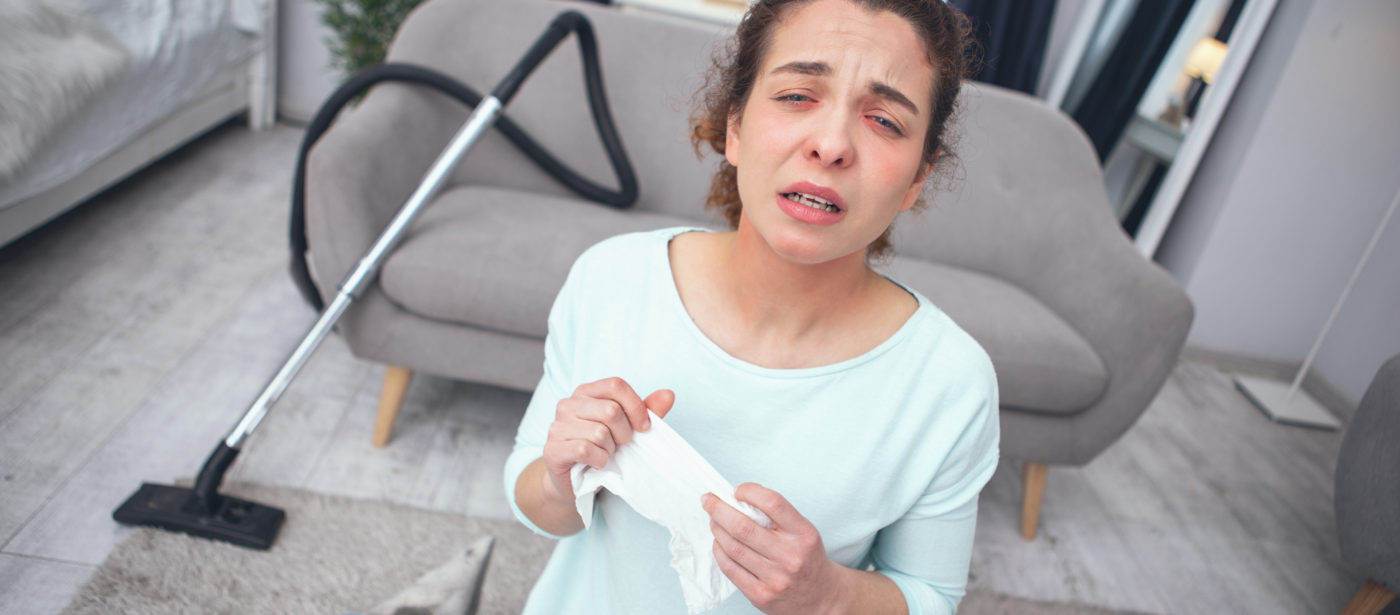October 27, 2022
Don’t Let Allergies Haunt You This Fall

The leaves are finally turning into stunning shades of orange, yellow and red. The air is getting crisp, and Halloween is just around the corner! With the gorgeous change of foliage, and all the wonderful fall festivities from haunted houses to hayrides and apple and pumpkin picking, it’s not hard to see why fall is the favorite season for so many. However, fall also comes with its fair share of allergies, and for those suffering with seasonal allergies, it can be one of the worst seasons of the year. That’s why it’s important to get tested, so you can best understand and control your allergies and get back to all the fall fun this season!
What Causes Fall Allergies?
Fall allergies are some of the worst of the year due many potential allergens. Fall allergens include Elm tree pollen, and weed pollen, including ragweed. Ragweed is among the most prevalent of all fall allergies due to its incredibly high pollen counts in the fall. Fall allergy symptoms are like those of other seasons. They include runny nose, itchy and watery eyes, sneezing, and coughing.
What is really causing dust allergies? What is in the dust?
If you find yourself in a dusty basement or attic, and begin to sneeze uncontrollably, develop watery eyes, your throat becomes itchy- you may think you have a dust allergy. The truth, however, is not that you’re allergic to dust in general, but rather the particles in dust such as pollen or dust mites that live in dust. Dust mites are microscopic organisms related to ticks and spiders. They are entirely naked to the human eye and can live up to 3 months. Mattresses, pillows, carpets, upholstered furniture, and house dust are where they burrow and live. Much like how dust itself is not the cause of allergies, the dust mites themselves also aren’t the reason for allergies but rather the proteins left behind in their droppings as well as dead carcasses that trigger a dust mite allergy.
How can I prevent dust mite exposure?
Dust mites love warmth and humidity. While their favorite season is summer, they can flair up in the colder months of fall due to turning on your heat. To minimize the impact of dust mites in your home, it is recommended that you have dust mite covers on your pillows and mattress. You can add a HEPA filter to your home to help filter out allergens. HEPA filters are incredible machines that filter and trap 99.97% of air particles, as well as trapping particles as small as 0.3 microns in diameter. You should have upholstered furniture professionally cleaned as well as regularly washing all blankets, bedding, and pillows on hot water, high heat in the dryer. Removing carpeting will help reduce dust mite exposure.
Why does my dust allergy only trigger in other people’s homes?
You may have noticed that your allergies are only triggered when you go to certain people’s homes. The answer to that is simple: everyone is different. Individuals care for and style their homes in diverse ways! Homes with more upholstered furniture, more carpeting, rugs, curtains, blankets, and pillows are more likely to have dust and dust mites. The more furniture you have in the home, the harder it is to reach every square inch to clear the space of dust. Having a plethora of fabric items in your home such as curtains and throw pillows, creates a heartier environment for dust mites to live in. Having pets, especially more than one, is another contributing factor due to the build-up of pet dander and shedding fur where dust mites can burrow.
Is dust mite allergy likely to trigger an anaphylactic shock?
If you’re allergic to dust mites, you may worry about anaphylactic shock. The good news is dust mite allergies are not associated with anaphylaxis. However, not only can dust mites trigger allergies, but they can also trigger asthma attacks. Symptoms of an asthma attack include difficulty breathing, chest tightness, wheezing or whistling sound when exhaling, and shortness of breath. Asthma attacks can be dangerous, and it is extremely important that you consult with your allergist if you suspect you have a dust mite allergy that could be triggering your asthma.
How can I know if I am allergic to dust or pollen?
If you suspect you may have a dust allergy, it is important to first consider what is dust? Dust is made up of many things including insect parts from mites and cockroaches such as their waste and body parts, mold, pet dander, and even pollen itself. If you believe you have a dust allergy, it is important to make an appointment with your local allergist to get tested for potential allergies.
How exactly does immunotherapy work for allergies?
As we get older, we can either develop natural immunity or outgrow allergies as well as develop new ones. If your allergies are persistent and severe, immunotherapy may be the best treatment course for you. Once you make an appointment with your allergist, they will proceed to do a skin test to determine your allergies. Your allergist will introduce allergens to your skin and look for any allergic reactions you may have. Depending on the severity of your symptoms, your doctor may recommend immunotherapy. Immunotherapy can either be sublingual or in the form of allergy shots. Immunotherapy shots work by introducing your allergen in controlled doses into your body through subcutaneous injections or sublingual drops. As you move through your treatment protocol the dose will increase, and your immune system will begin to develop immunity against your allergies. Immunotherapy protocols are typically 3-5 years after achieving a maintenance dose.
To learn more about dust mite allergies, allergy testing, and different types of immunotherapies, contact Southern Nevada Allergy today.